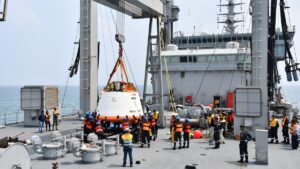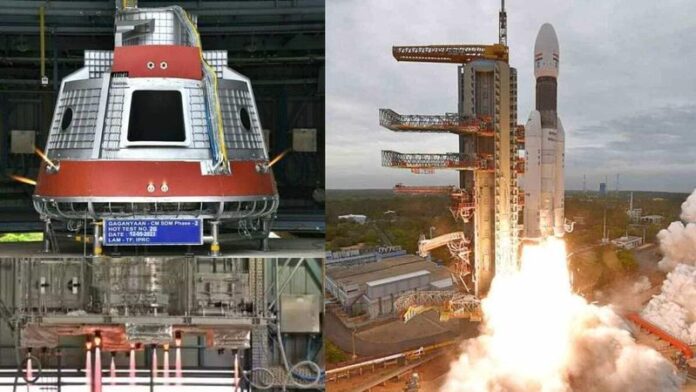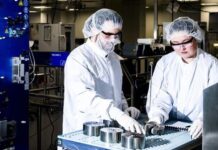ISRO plans tests in 2024 to ensure the Gaganyaan crew module remains upright upon splashdown. The crew module will be subjected to an experiment by the Indian Space Research Organisation (ISRO) to see if it can stay upright after falling into the ocean.
On October 21, this year, the basic crew module of the TV-D1 mission was found by naval divers in the Bay of Bengal, although it was upside down. The TV-D1 mission served as a prelude to ISRO’s Gaganyaan mission, which is slated to be the first human spaceflight and take place in 2024–2025.
According to TV-D1 mission director S Sivakumar, the uprighting system is one of several systems that will be tested during the second test mission (TV-D2), which is slated for next year. This is prior to a full-fledged unmanned test flight into space for the crew module on the LVM3 rocket portion of the Gaganyaan mission.
The upright and upside-down poses are the two stable positions. Now, there will be an uprighting device that works like gaseous balloons, or like airbags in cars, to prevent the upside-down scenario in the actual crew module, Sivakumar added.
The upright and upside-down poses are the two stable positions. Now, there will be an uprighting device that works like gaseous balloons, or like airbags in cars, to prevent the upside-down scenario in the actual crew module, Sivakumar added.
According to him, the crew module will also contain backup systems in case the main crew module uprighting mechanism fails. He explained, “The sea water dye should get ejected to mark the region of the landing, and the recovery aids like the beacons had to work well underwater.”
“We plan to launch the next test vehicle mission in the first quarter of 2019 or 2020. The control systems of the crew module will replicate the uprighting, suspension, and seat systems of the crew.
Additionally, unlike in D1, when we exclusively employed high altitude escape motors, we will use both low and high altitude escape motors in the crew escape system, according to Sivakumar.
Despite the fact that all “three elements — the test vehicle, the crew escape system, and the crew module are new,” Sivakumar stated that the first test of the crew escape system and crew module in the TV D1 mission has been declared successful.
The largest accomplishment of the TV-D1 mission, according to him, was the deployment of the drogue chutes at the desired angle, which raises the crew module from a height of 17 km at a speed of 150 m/sec to a height of 2.5 km from the sea’s surface at a speed of 63 m/sec.
“We have made an effort to produce some basic facts. According to Sivakumar, every parachutist and crew escape system on Gaganyaan is brand-new.
Following the TV-D1 trip, a crew module designed to more closely resemble the final mission will be used in a second demonstration flight scheduled for next year. “In the test vehicle D2, we will be simulating the crew seats, control and floatation system, etc., next year,” he declared

































